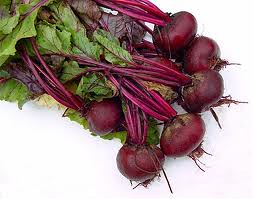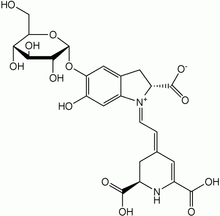Betalains are alkaloid pigments which are
found in some families of plants belonging to the order Caryophyllales, but in
no other plants.
They are
named after the Beet family of plants (Beta).

Betalains are not found in plants containing anthocyanin pigments. Structurally they are unrelated. Unlike anthocyanins, they are not pH indicators as their colour is stable over a wide range of pH. They are oxidised over time going brown in colour. This can be prevented by 0.1% ascorbic acid.
They have
also been found in some fungi too e.g. Fly Agaric (mushroom)
Betalains
can be divided into two types as betacyanins and betaxanthins; based upon their
molecular structure.
Betacyanins
Usually appear red to red violet in colour (absorbance in
535-550nm)
Betaxanthins
Usually appear yellow in colour (absorbance in 475-480nm)
Betalains are found in the
vacuole and they are water-soluble.
Also they cause
colour in both flowers, fruits and sometimes vegetative organs
Beetroot contains 2 Betacyanins. Thay are Betanin and a derivative.
Not much is
known about the role of betalains. Commercially they are sometimes used as food
colourants. As a food dye it’s cheap and no all allergic side effects are
figured out yet.
Basic structure of betalain

Great tips regrading anthocyanins. You provided the best information which helps us a lot. Thanks for sharing the wonderful information.
ReplyDeleteI’m glad that you shared this helpful information with us.
ReplyDelete